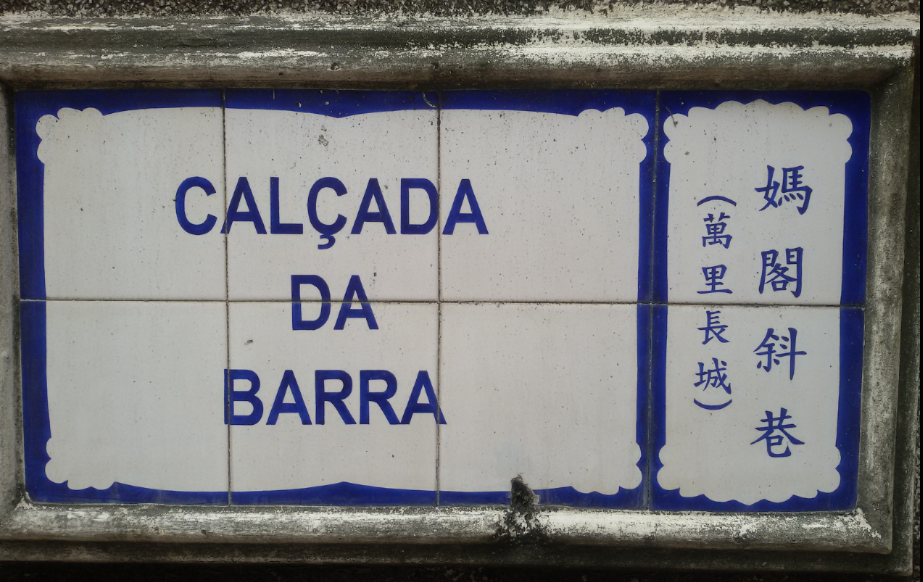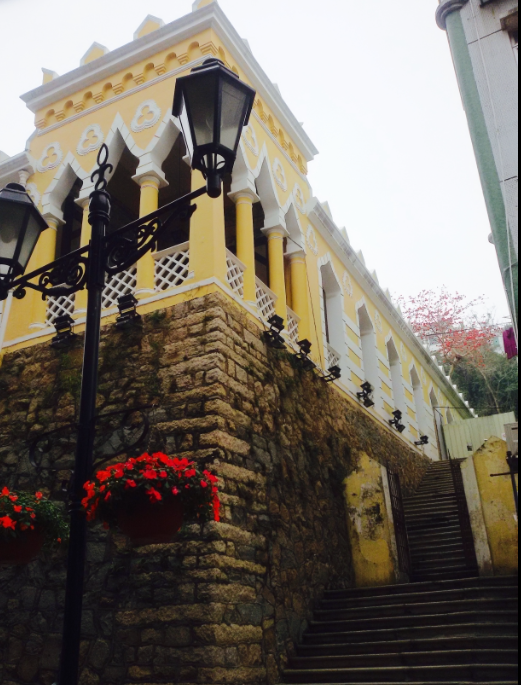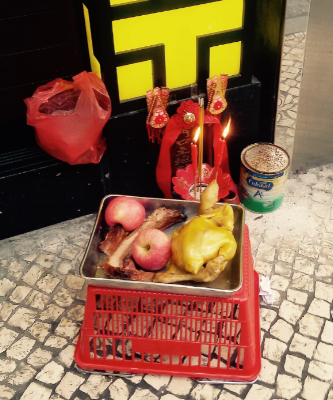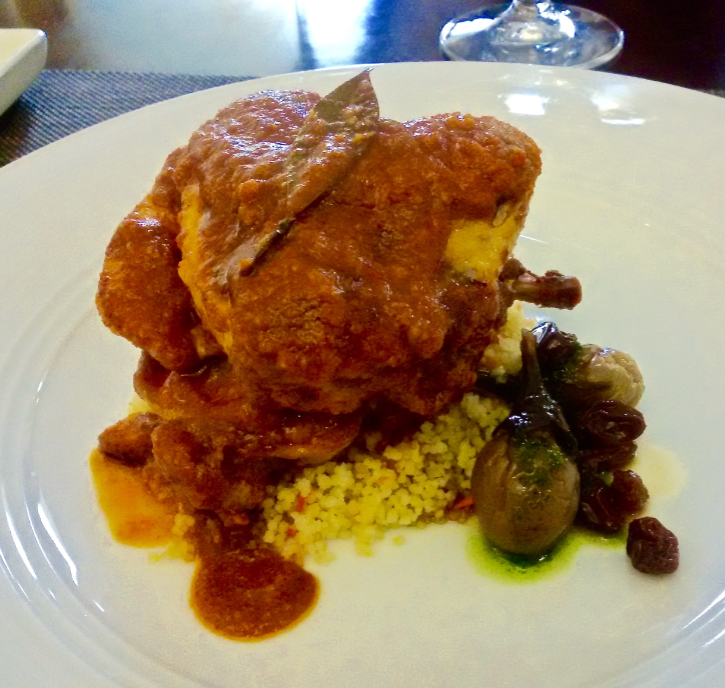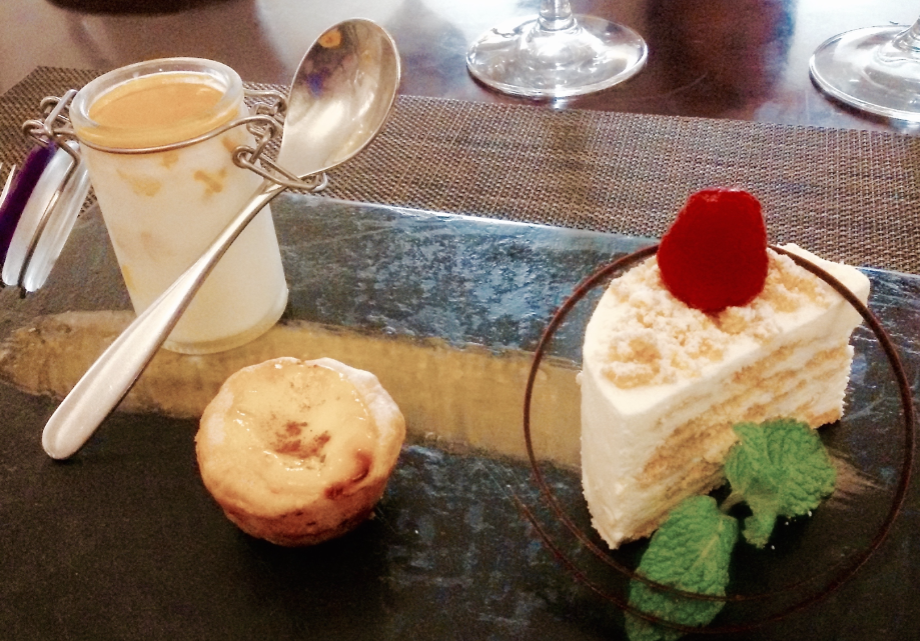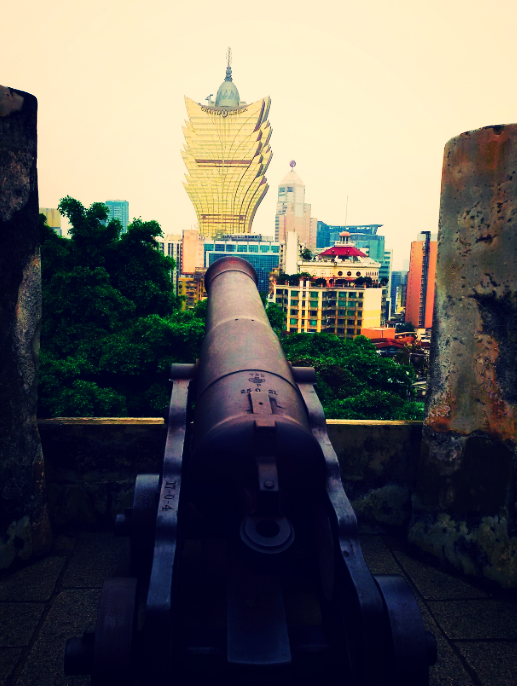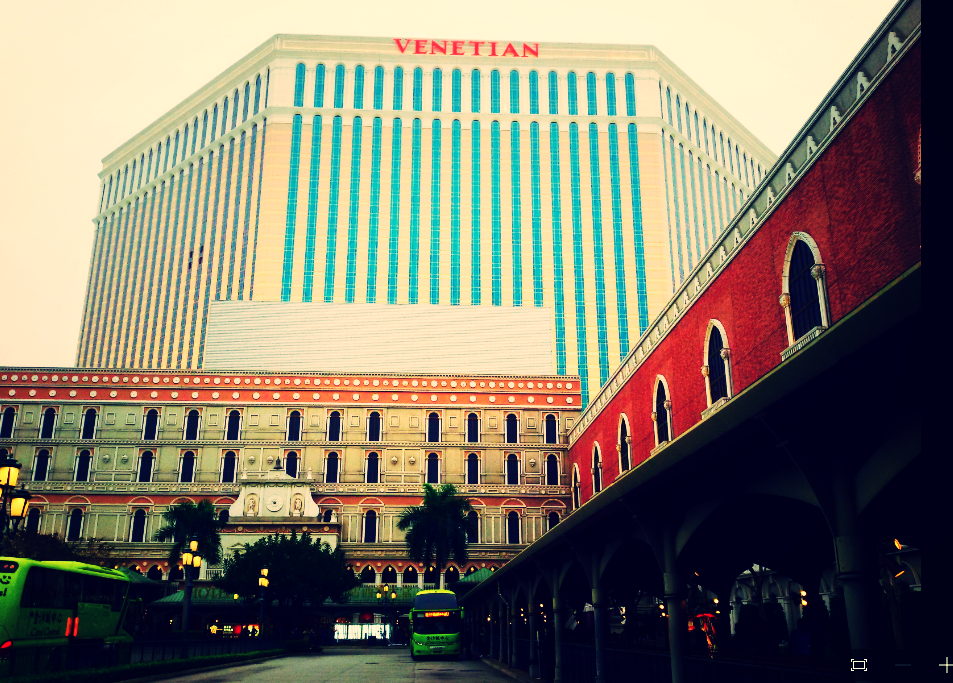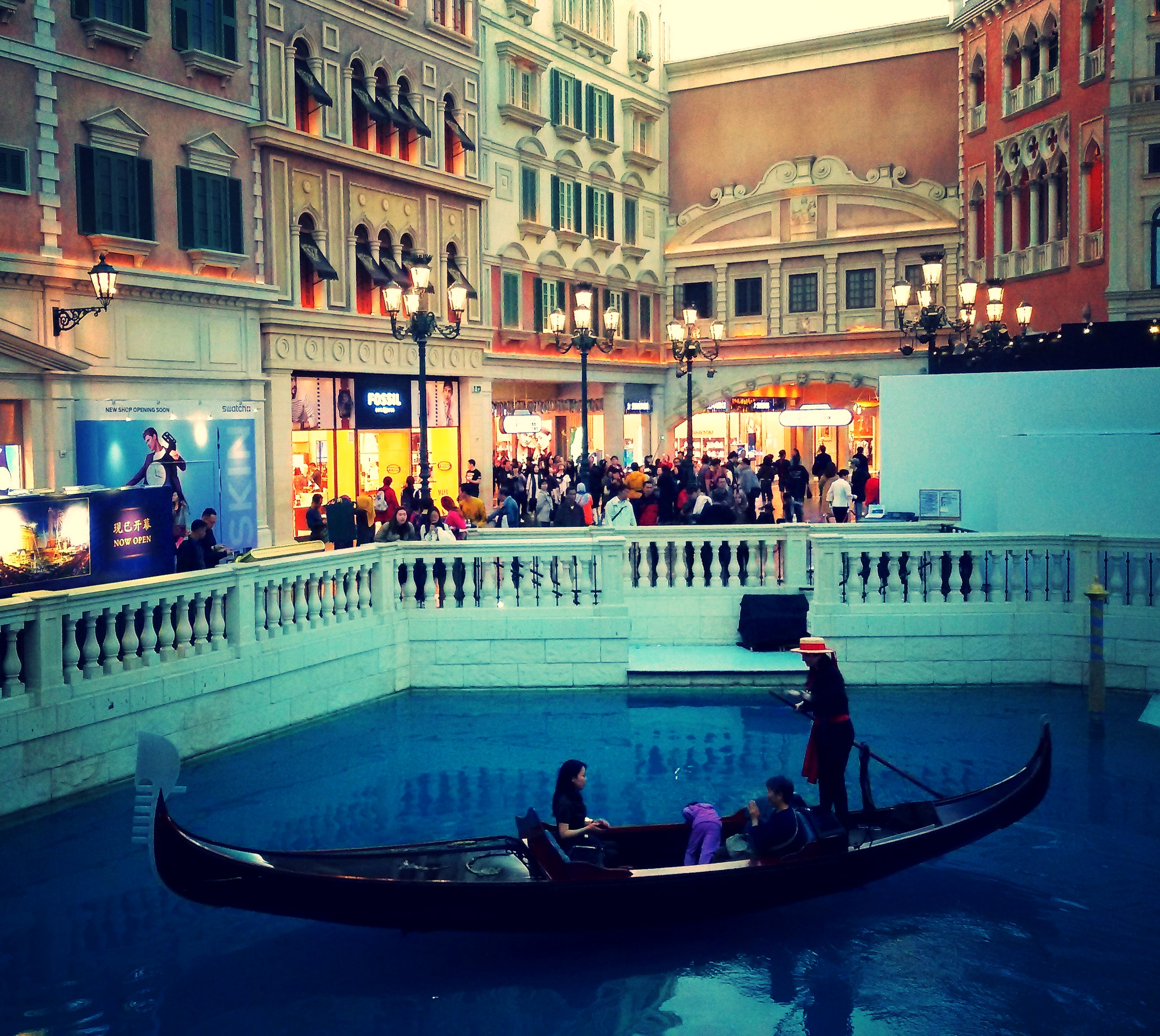by Jessica Faleiro
In Sun After Dark (Bloomsbury; 2005), Pico Iyer writes, 'The modern, shifting world has brought disorientation home to us, and mystery and strangeness; even in the most familiar places we may come upon something unsettling ...' As I walk through the streets of modernised Macau, I recall these lines from one of my favourite travel writers, and I realise that I am confronted with the opposite. This Special Administrated Region (SAR) of China was administered by Portugal from the mid-1500s to 1999, after which it was 'handed back' to the Chinese government. All around me, I can hear what I guess is Cantonese, but every now and then, a Portuguese word or two drifts to my ears and I turn around in search of the speaker, in vain. It seems as if familiar ghosts of the past are haunting me in this remote Far East Asian territory.
I was born on the west coast of India, in Goa; a state which, like Macau, was also under Portuguese rule for over four centuries. The few Goans I've spoken to about Macau have nostalgic notions of an ex-colonial sister-seaport. Macau, like Goa, also had a diverse population of missionaries, businessmen and soldiers moving through its port. Similarly, locals took on Portuguese influences that are imprinted in Macanese architecture, culture and food. Like fraternal twins, Goa and Macau have similar interiors with different outward appearances. For example, take Goa's Latin Quarter, Fontainhas, where the street signs are blue lettering on white tile. But here, although it's the same mock-azulejos design, the signs are in Cantonese and Portuguese - the two languages that locals communicate in. Macau's churches, protected by UNESCO World Heritage status, remind me of Old Goa's similarly preserved clutch of ecclesiastical buildings.
I've been invited to participate in Macau's two-week long annual literary festival, 'The Script Road.' I'm staying for only six days and the schedule is jam-packed with interviews, panel events and writing workshops. In the few moments in between, when I can fit in some sightseeing, I'm determined to discover whatever I can of the city's tangible links to Goa and India, and the first diamond in the rough I begin hunting for is the 'Moorish Barracks'.
Walking up a steep slope, I see the sharp corner of an elevated building jutting out into the street. Built in 1874, the brick and stone, neo-classical edifice was constructed to accommodate an Indian regiment from Goa appointed to reinforce Macau's police force. It forms a reminder of the close links forged between Goa, as Portugal's administrative seat in the East, and its Far Eastern ex-colony of Macau, dangling off one end of China. The pristine yellow and white building with wide verandahs, stands on a raised granite platform, towering about street level with direct views of the riverside, allowing authorities to monitor the flow of boats in and out of the Inner Harbour. It now functions as the headquarters of Macau's Harbour Authority and I'm a little intimidated by the security guard posted outside, so I stop myself from taking a closer look.
Though there isn't a time to visit it, later, I find out that the Punjabi and Gujarati Muslims in the Indian regiment from Goa were buried in a cemetery called, 'Ramal dos Mouros' or 'Extension of the Moors.' The Lusophone world referred to people who followed the Islamic culture as Moors, associating them with the 7th century Muslim inhabitants that once lived in what is now Morocco, Spain and Portugal.
Sacred offerings of incense and food. The ritual is called Jingxiang and practised by Taoist, Buddhist, Shen and Confucianist traditions.
Apart from an occasional tourist and a few local Chinese milling about on errands, the back streets and alleyways away from the city centre are uncannily quiet. I come across lots of small mom-and-pop eateries selling local specialties out of small spaces that seem like garages kitted out with tiny make-shift kitchens and a couple of circular tables for communal eating. But most of them are empty. I spot a lone man placing a rather large offering of some sort in front of a little pavement altar wedged between two shop-fronts. On closer inspection, I notice it's a cooked chicken, head included. The grotesque offering is unfamiliar, even though the concept of the altar is not; every Goan Hindu and Catholic household I know has one.
My first introduction to the city aside, I rush to the Old Court building, a dull, cement-grey erection with neo-classical columns, built in 1951 on Avenida da Praia Grande, where they're hosting the literary festival. I'm just in time for an interview with Tribuna Macau Journal and a twenty-minute photo session with the festival's photographer, Eduardo Martins. Perhaps, he notices jet-lag setting in and takes pity on me, or maybe he just wants to ensure I take a high-energy photo, but he keeps me in seamless conversation, interjecting only briefly to ask me to strike a pose in profile or to stand behind a chair. He tells me that besides the Chinese and the Macanese, the Portuguese make up a good percentage of the population here and most of them are journalists, in advertising or lawyers. I learn that one of the conditions of handing Macau back to China was that Portuguese laws would continue to be upheld for fifty more years or so, there are a huge number of Portuguese lawyers living in Macau who are still needed to interpret and enforce existing legislation.
The population of Macau is about half a million people, of which only about 20,000 are native Macanese of mixed Chinese, Portuguese and Malay heritage, though the numbers vary depending on who you speak to. The Macanese population is notoriously close-knit and I'm told that they tend to mix only among themselves, though many of them have settled abroad. Over ninety percent of Macau's populations is Chinese and about five percent is Portuguese. I wonder what this means to the minority population of Macanese still living on this little strip of land that, in 1557, was handed over to the Portuguese by the Ming Court, in exchange for getting rid of the pirate stronghold that was a major problem for Chinese shipping then.
As I'm about to leave the building I meet Helder Beja, 'The Script Road,' Director, for the first time face-to-face. I thank him for the invitation and am pleased to learn that I'm the first Goan author they've had at the festival since its inception in 2012.
I wake up the next day to a wet and gloomy spring morning. 'It's typical for Macau at this time of the year while we're transitioning into summer,' I'm told by the cheerful Filipino hotel concierge. I have an interview with Marco Carvalho, the thick-bearded editor-in-chief of Ponto Final, Macau's main Portuguese broadsheet and sponsor of 'The Script Road.' He asks whether I feel rootless, having grown up outside of Goa for most of my life, and tries to tease out how much being of Goan origin relates to my sense of identity. It's after he's switched off his voice recorder and we slip into a casual chat about Macau's links to India that Marco tells me about a relatively less known sub-community of Macanese from Daman, Gujarat, living in Macau. Considering the number of ethnicities from the Malay Peninsula, Hong Kong, Portugal, Goa and even Russia that have been integrated into Macau over the years, it is no surprise to find a Gujarati community settled here as well.
Hardly surprising then, that the Macanese people are going through an identity crisis, exacerbated by the influx of mainland Chinese into tiny territory over the last twenty years or so. Another Portuguese expat, Claudia, tells me that the Macanese once spoke Patois, a Portuguese-root Creole language of their own, which has all but disappeared, and I wonder if any of them feel alienated in their own home. Claudia adds, 'although the imprint of the Portuguese may still subsist in the city, Macanese culture seems destined to disappear, diluted in a sea of mainland Chinese. I think you can see that sadness in the old Macanese people's eyes.'
Later, on a panel with noted Australian novelist, Brian Castro, we discuss how the question of identity enters our work. I talk about my experience of being a Third Culture Kid, with Goan parents, who has spent the majority of her childhood and working life outside of Goa, and how it helps define one's identity, through their humanity, rather than by politicized boundaries. Immediately after, I'm taken aside for a live interview by Radio Macau's engaging broadcaster, Karlos, who asks me to elaborate on the idea of Third Culture Kids. As I answer, I'm impressed by his ability to seamlessly move between translating what I'm saying into Portuguese for the live show and back again to question me in English. Afterwards, Karlos and I end up having a lengthy conversation about how my global mobility helps me perceive the challenges behind global political movements unfolding in the world today. He shares with me how amazed he was to discover so many ethnicities in Macau when he first arrived here a few years ago.
There's a treat in store for a group of us at the Institute of Tourism Studies where I've been invited to lunch, served by their catering students, before delivering a talk about travel writing to two hundred students. I've ordered the Macanese dish 'Galinha Africana,' which has a spicy, satay sauce and is served on a bed of couscous with kalamat olives and raisins. It's savoury tang is unlike any Goan or Portuguese dish I've ever tasted. The chef tells us that the recipe has Mocambiquan and Goan influences found in the spice rub marinade and the sauce. I top off the meal with a dessert trio of mango soufflé, egg custard and a mini-Serradurra or 'Sawdust pudding.' The last is a delightful dish that one can find in Goan homes. As I spoon mouth-watering morsels of cream and crunch into my mouth, I feel that ghost of the ever-familiar lingering in the air.
'Ruins of St. Paul'
St. Augustine, Indo-Portuguese works 17th century. He is most recognised wearing his Byzantine mitre (tall hat).
I know I cannot leave Macau without seeing its emblematic postcard icon, the towering façade of the 'Ruins of St. Paul' on Largo da Companhia de Jesus. The façade is all that remains of the 17th century church complex that caught fire and was almost completely destroyed during a typhoon in 1835. The ruins sit atop a hill with 68 stone steps leading up to it. Through the entrance and just underneath the church is the Museum of Sacred Art; a small room of religious ornaments and artefacts. The provenance of each item seems to be based largely on guesswork as most items have vague labels. But, a few objects catch my eye, like the life-size, painted wood statue of St. Augustine that is labelled, 'Indo-Portuguese work, 17th century.' That familiar haunting makes me choose to read it as 'Made in Goa.'
To one side of the inner complex is an excavated area entitled the 'St. Francis Xavier Chapel.' The little plaque next to it doesn't offer much information. Later, I find out that Coloane, a drive south of the city centre, has a chapel built in 1928 dedicated to St. Francis Xavier that, supposedly, once contained bone fragments of his fingers and rosary beads that belonged to him.
St. Francis Xavier died on the island of San Chuan, located about seventy kilometres to the west of Macau, while he was on a mission to Japan. His miraculous body, which was found to be intact and uncorrupted when exhumed from his initial internment, was eventually brought to Old Goa where it remains today, entombed in a glass and silver casket. This and the other strong, tangible, lasting connections to Goa make me wonder what other kinds of connections Goa and Macau might have.
I've heard that there are opium traders buried in a cemetery in Macau - I wonder if they have a Goa connection. Panjim was built around the 1820s with revenues arising from the Portuguese opium trade. Macau was a location known to facilitate the movement of opium around Asia. What else could caravels have left behind in Macau from Goa besides spices that isn't recorded in some artefact or document? Pirates were reported to have lived and operated out of Macau up until the 1920s. What if a pirate or two were originally from Goa, or even better, an ancestor of mine!
The writer in me is entranced by the myriad of possible stories that lie around every corner and within every person I meet. The evening before I leave, I have to remind myself that I've been so steeped in unfurling the secrets buried within Macau's layers that I've completely forgotten to take a look inside one of the casinos that define modern Macau.
Legalised gambling in Macau dates back to when Chinese gambling dens started paying rent to the government under a licensing system. Since the handover in 1999, there are over thirty established casinos in Macau, many of which are established names in Las Vegas like Wynn, Galaxy and Sands. The soulless-ness of these massive structures pervasively drains all energy, spirit and character away from their surroundings and swallows them into a black hole sourced from their gambling pits. The casinos account for fifty percent of the economy, so I suppose the locals have to find a way to make their peace with this traumatic rent in their skyline, punctuated by glitzy neon monstrosities like the Grand Lisboa - a giant steel and glass thistle-shaped structure shooting upwards from the ground.
It's a brief, free shuttle bus-ride to 'The Venetian' from my hotel, so I escape for two hours to see what all the fuss is about. The sheer extravagance, opulence and superficiality of Macau's largest casino, complete with an uncannily real indoor sky and fake lagoon with Venetian gondolas, is something you have to walk around in, in order to fully comprehend. It's a space that largely sets the tone for the Macau, I've seen so far - a handful of heritage sites that have been preserved for commercial tourism, while the rest have been destroyed to make way for modern development that reflect nothing of Macau's rich and diverse cultural heritage.
There's almost no sign left of the fishing villages that once characterised the coastal edge, except in parts of Coloane and Taipa. The churches have been renovated, but the farther you move away from the city centre, the more tawdry the buildings and narrow streets start to look. Apart from meeting a couple of Chinese-Macau residents who were born and brought up in the region, I've been interacting mostly with Portuguese and Filippino expats who are kind enough to share with me what little they know about the city that is their temporary home. But, underneath it all, I know there is more to Macau for those willing to stay still and uncover what lies beneath. Considering that I came to Macau without any sense of nostalgia weighing me down, or any expectations of wanting to stay longer than six days to participate in 'The Script Road,' I find myself unusually drawn towards Macau. I hope to return again, so that I can continue to unearth the familiar lodged in the unfamiliar.
Jessica Faleiro's fiction, non-fiction, poetry and travel writing have appeared in Asia Literary Review, Indian Quarterly, Mascara Literary Review, Muse India, India Currents, Rockland Lit, Times Crest, tambdimati and in various anthologies. Her debut novel, Afterlife: Ghost Stories from Goa (Rupa; 2012) will be shortly followed by The Delicate Balance of Little Things. Jessica hosts talks on the writerly life and runs creative writing workshops in Goa. She has an MA in Creative Writing from Kingston University, UK. To follow her writing click here.

